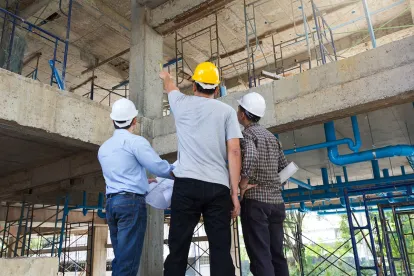Withdrawal liability is a statutory obligation under the Employee Retirement Income Security Act (ERISA) that any unionized employer may have to confront. Exemptions from liability include one applicable to construction industry employers.
Withdrawal Liability
Under ERISA, the federal statute regulating employee benefit plans, an employer that has assumed an obligation to contribute to and subsequently withdraws from a multiemployer pension plan (MEPP) is liable for its allocable share of any underfunding. This “withdrawal liability” is triggered when a contributing employer withdraws from a MEPP. Withdrawal typically occurs when the employer’s contributory obligation permanently ceases.
Special Construction Industry Rules
Special rules (referred to as the “Building and Construction Industry Exception”) apply where (1) an employer contributes to a MEPP that primarily covers employees in the building and construction industry and (2) substantially all of the employees for whom such employer is obligated to contribute perform work in the building and construction industry.
Under the Building and Construction Industry Exception, an employer will not withdraw unless its contribution obligation permanently ceases and the employer (within five years) performs work of the type for which contributions were previously required on a non-contributory basis. In other words, withdrawal liability is imposed under the Building and Construction Industry Exception only when the employer’s “obligation to the fund ceased” but the employer “continued doing covered work.” Elliott v. Carpenters Pension Trust Fund for Northern California, 859 F.2d 808, 811 (9th Cir. 1988).
What is the Building and Construction Industry?
Surprisingly, the statute does not define the term “building and construction industry.” The statute’s legislative history and guidance issued by the Pension Benefit Guaranty Corporation (the federal agency with regulatory and enforcement authority over the Multiemployer Pension Plan Amendments Act) indicates that the term should be given the same meaning as developed under labor-management relations law. Courts generally look to case law developed in the administration of the National Labor Relations Act (NLRA).
Section 8(f) of the NLRA allows an employer “engaged primarily in the building and construction industry” to enter into a collective bargaining agreement with a union before the union has established majority status through a formal election. Case law under Section 8(f) has developed a definition of “building and construction industry” that “includes employers engaged in the provision of labor whereby materials and constituent parts may be combined on the building site, but not those carrying out the manufacture and assembly of products installed by others at the construction site.” Lineback v. Irving Ready-Mix, 653 F.3d 566 (7th Cir. 2011), quoting Carpet, Linoleum, and Soft Tile Local Union No. 1247 (Indio Paint), 156 N.L.R.B. 951, 959 (1966).
There is scant case law defining the scope of building and construction industry work for the Building and Construction Industry Exception. Similar to the Section 8(f) cases discussed above, most courts have interpreted the phrase narrowly. See, e.g., Union Asphalts and Roadoils, Inc. v. MO-KAN Teamsters Pension Fund, 857 F2d 1230, 1235 (8th Cir. 1988) (employees who delivered road oils and asphalt materials to road construction and repair contractors but who “did not engage in spreading road oil or asphalt on any highway or in any other way engage in actual road construction or repair” were not performing work in the “building and construction industry” for purposes of the Building and Construction Industry Exception). Some courts, however, have adopted a broader approach, finding the statute does not specify that employees must actually “construct or build,” but rather covers the industry (building and construction) in which the employees must perform work. In Re Carl E. Smith, Inc., 2006 WL 3890677 (Bankr. S.D. W. Va. 2006).
***
In the absence of governing regulations and sparse case law, the scope of the Building and Construction Industry Exception remains murky. In many cases, the application of the exception will be the difference between significant liability and no liability. Accordingly, employers should consult counsel well-versed in this complicated legal area.





 />i
/>i

